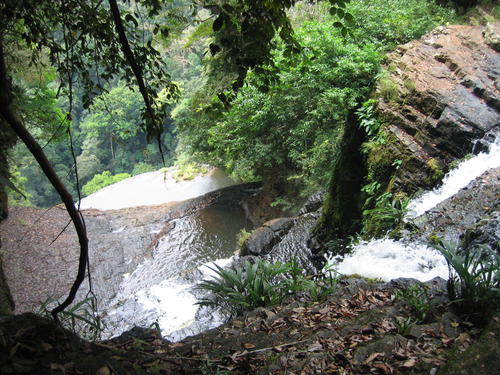
Colombia’s Los Katíos National Park has been taken off the List of World Heritage in Danger on Tuesday, June 30 2015 at the UNESCO World Heritage Committee meeting taking place in Bonn, Germany. The decision follows advice by the International Union for Conservation of Nature (IUCN) – the official advisory body on nature to the Committee.
After suffering extensive damage from illegal logging, poaching and overfishing, which proliferated in a climate of armed conflict in the area, Los Katíos was danger-listed in 2009 at the request of the government of Colombia. The park authority has now regained control of the site thanks to intensified patrolling and engaging local communities in the sustainable use of the area’s natural resources, allowing the site to be removed from the danger list.
“This is what the danger list is about: a constructive mechanism to stimulate joint efforts nationally and internationally to take concrete action in the face of imminent threats to our common heritage,” says Tim Badman, Director of IUCN’s World Heritage Programme. “Colombia took advantage of the danger listing and made every effort to start reversing the critical situation this exceptional site was in.”
Los Katíos National Park was inscribed as a World Heritage site in 1994 due to its outstanding biodiversity. Bordering Panama’s Darien National Park – also a World Heritage site – the park is part of a larger area that is important for the survival of threatened species, such as Baird’s Tapir, the Giant Anteater, American Crocodile and West Indian Manatee. With no formal border crossing between Colombia and Panama, the area, known as the Darien Gap, is one of the world’s most species-rich regions of moist lowland and montane rainforest, with exceptional numbers of endemic species.
However, due to its remoteness and strategic location, forming the narrowest ‘land bridge’ between two subcontinents and between the Atlantic and Pacific Oceans, the area is also affected by the transit of armed groups and those displaced by armed conflict, as well as drug trafficking and the illegal use of natural resources. Decades of internal armed conflict in the area have resulted in the National Park managers losing control over Los Katíos. Poverty in rural areas near the World Heritage site has also fuelled demand for its resources in the absence of alternative sources of livelihood.
While the security situation in the area is still not fully resolved, the park’s management is now in a position to operate in the entire site. An IUCN field mission in January 2015 confirmed that the steady increase in patrolling and cooperation with local communities since the park was danger-listed has had positive results, including a reduction in illegal activities.
Agreements on the sustainable use of natural resources with local communities, who are now involved in monitoring fish populations, have succeeded in containing overfishing and overharvesting of the site’s rivers and swamps.
Dialogue with the Indigenous Wounaan community, who consider parts of the park as their ancestral land, is also progressing. Their ancestral rights are now recognised, and cooperation to maintain a balance between the community’s livelihood needs and conservation objectives has become an integral part of the site’s management.
“Colombia’s efforts over the last six years to respond to complex challenges affecting both the integrity of Los Katíos National Park and the livelihoods and security of local communities have been impressive and must be sustained to secure the long-term conservation of the site,” says Tilman Jaeger, IUCN World Heritage Advisor. “Natural World Heritage sites are much more than just beautiful places – they also support people’s lives. We have all to gain by managing them in a sustainable, participatory way.”
Colombia has also re-affirmed that there is no legal basis for two large infrastructure projects, potentially threatening the park, to be constructed within the site’s boundaries. These include the last missing link of the Pan-American Highway – the world’s longest road crossing North, Central and South America, which is interrupted at the Darien Gap – and an electricity transmission corridor linking Colombia to Panama. Possible indirect impacts will have to be understood and considered if these infrastructure projects eventually take shape.
Natural World Heritage sites are globally recognised as the world’s most important protected areas, inscribed on the UNESCO World Heritage List for their unique natural values, such as the scale of natural habitats, intactness of ecological processes, viability of populations of rare species, as well as exceptional natural beauty. One in four World Heritage sites is natural.
The List of World Heritage in Danger is designed to mobilise urgent, international action to protect the most threatened sites. A total of 46 sites are currently listed as ‘in danger’, including 19 – over 40% – natural sites.
IUCN is the advisory body on nature to UNESCO’s World Heritage Committee. Working closely with IUCN’s World Commission on Protected Areas (WCPA), IUCN evaluates sites nominated to the World Heritage List, monitors the conservation state of listed sites, promotes the World Heritage Convention as a leading global conservation tool, and provides support, advice and training to site managers, governments, scientists and local communities.
